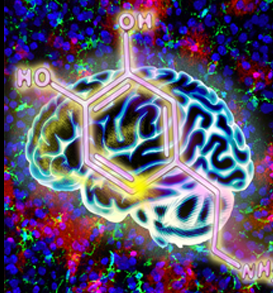






A recent study published in Nature Neuroscience reported the first release of the whole-brain projectome of over 6000 single neurons in mouse prefrontal cortex (PFC), the largest database of whole-brain single-neuron projectome of mouse to date. Through comprehensive analysis, this study identified 64 projectome-defined neuron subtypes in the mouse PFC and their spatial organization, the modularity and hierarchy of intra-PFC connectivity, and the correspondence between transcriptome-defined and projectome-defined neuron subtypes. The study established a comprehensive single-neuron projectome of mouse PFC, systematically studied the internal connectivity and the efferent projection patterns of PFC, and proposed a working model of the PFC, thus providing a structural basis for the neural mechanisms of high-level cognitive functions of the PFC. The study also established the pipeline for future studies of whole-brain mesoscopic projectome in model organisms.

A recent study by a team of Chinese researchers about how the brain encodes and stores sequences was published in the Science journal on Feb 11. The study was a collaboration between CEBSIT, the Shanghai Center for Brain Science and Brain-Inspired Technology and Peking University's school of life sciences.The study involved training macaques to memorize spatial sequences. Macaques are most similar to humans in terms of brain structure and functions, and therefore are the best subjects for studying complex cognitive functions, according to the team.

A recent study published in Nature revealed the structural basis of antidepressant ketamine action on human NMDA receptors. This work was performed by researchers in Dr. ZHU Shujia’s Lab and Dr. LUO Cheng’s team. This work has provided the structural basis of ketamine binding and action on human NMDA receptors, and paved the way for future development of ketamine-based antidepressants.

A recent study from Dr. ZHU Shujia’s Laboratory published in Neuron uncovered the gating mechanism of human GluN1-GluN2A NMDA (N-methyl-D-aspartic acid) receptor using cryo electron microscopy (Cryo-EM) and discovered a novel modulator niche resides in the linker cavity.

A recent study published in Neuron unraveled the computational mechanism of a specifically defined neural circuit in the cerebral cortex underlying the rule-based flexible decision-making behavior. This work was performed by the team from Dr. XU Ninglong’s lab.

A recent study published in Nature Cell Biology demonstrates that the low-abundant transcripts and long non-coding RNAs (lncRNAs) could successfully be detected. This study was performed by researchers in Dr. YANG Hui's team and Dr. ZHOU Haibo's team. In this research, researchers developed a highly flexible sgRNA switch (Ents) driven by an endogenous promoter, which can theoretically process the information of any endogenous transcript.

Professor Logothetis is the incoming Co-Director of International Center of Primate Brain Research, Institute of Neuroscience, Center for Excellence in Brain Science and Intelligence Technology of the Chinese Academy of Sciences. In the study, published in the recent issue ofNature, the group of Logothetis used multi-structure recordings in macaque monkeys, and demonstrated for the first time that the brainstem indeed transiently modulates the hippocampal network-events through the PGOw.

A recent study published in Neuron entitled “Specific hypothalamic neurons required for sensing conspecific male cues relevant to inter-male aggression” describes a novel neural circuit for detecting male pheromone cues pertaining to inter-male aggression. This work was performed by researchers in Dr. XU Xiao-Hong’s Lab. These results provide crucial insights into the neural circuit mechanism underlying sex specific olfactory information processing and regulation of sexually dimorphic social behaviors.

A recent study published in Neuron describes in greater detail than ever before the anatomical embodiment of color sensations in the cerebral cortex, linking brain structure to perceptual function. This discovery was the fruit of cooperative work between researchers in Dr. WANG Wei’s lab.
